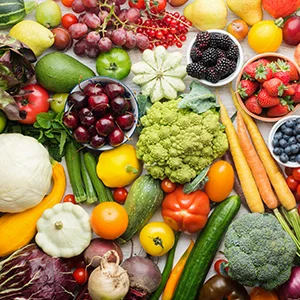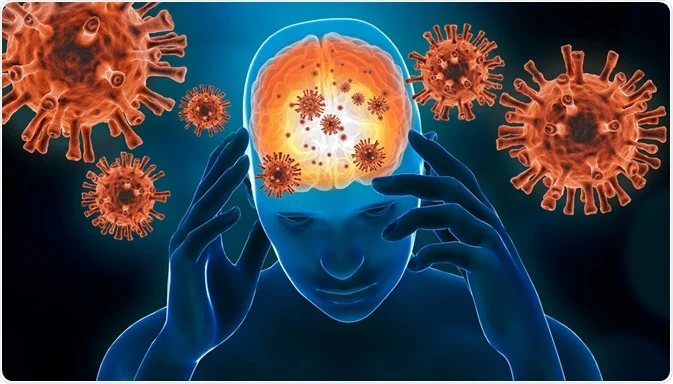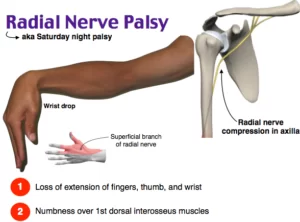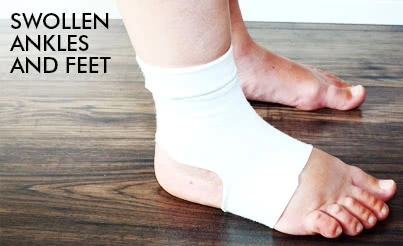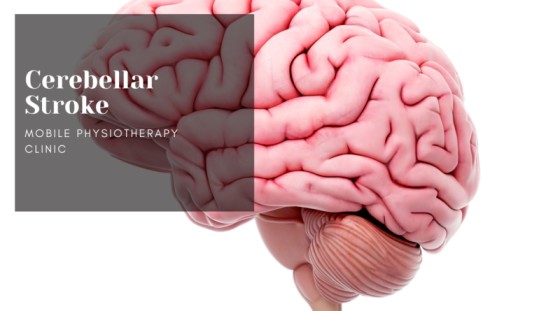Fueling Recovery: The Best Foods for Stroke Patients
Importance of Healthy Foods for Stroke Patients
For individuals who have experienced a stroke, a balanced and nutrient-dense diet plays a crucial role in their recovery and overall well-being. The journey to rehabilitation often involves specific dietary considerations to manage the risk factors associated with stroke, such as high blood pressure, high cholesterol, and diabetes.
This article explores the importance of a tailored diet for stroke patients, focusing on key nutrients and dietary guidelines that can aid in their recovery process. Additionally, it sheds light on the role of nutrition in preventing future occurrences and enhancing the quality of life for stroke survivors.
By understanding the significance of proper nutrition, individuals can take proactive steps to promote their health and resilience post-stroke.
Description of a stroke
A stroke happens when a blood artery that supplies the brain with oxygen and nutrients either bursts (or ruptures) or becomes blocked by a clot. When that occurs, brain cells die because a portion of the brain receives less of the blood and oxygen it requires. Any part of the brain, spinal cord, or retina can have a stroke.
What kinds of Strokes are there?
Ischemic strokes as well as hemorrhagic strokes are the two sorts. An ischemic stroke is caused by a clot that obstructs blood flow to the brain; a hemorrhagic stroke is caused by a blood vessel that bursts, restricting blood flow to the brain. A transient ischemic attack, sometimes referred to as a “mini-stroke,” is brought on by a transitory clot.
Diet and Stroke
Stroke and diet are connected. A person’s health is influenced by their food. A good diet is essential for preventing atherosclerotic cardiovascular disease. Dietary adjustments and lifestyle modifications can lower the risk of stroke by 60%. But in India, things are different since there’s no standard diet or average diet that’s followed by
Native Americans. Due to differing cultural, regional, and religious customs, there is variation in food habits across the nation. India’s food is incredibly diverse and rich. Considering the diversity of the soil, climate, cultures, ethnic groups, and vocations, these cuisines rely on locally sourced fruits, vegetables, herbs, and spices and differ greatly in flavour.
Recommendations for a healthy diet
For everyone, the Australian Dietary Guidelines offer guidance about eating healthily.
Every day, take pleasure in a broad range of nutrient-dense meals from these five food groups:
- Plenty of beans, legumes, and various colored and shaped veggies.
- Berries.
- Food items made of grains, primarily wholegrain and high-fiber types including bread, cereals, rice, pasta, noodles, polenta, quinoa, couscous, and barley.
- Fish, tofu, eggs, lean meats and poultry, legumes, seeds, almonds, and beans.
- Cheese, yogurt, milk, and their usually lower-fat substitutes.
- Additionally, sip lots of water.
Reduce your consumption of foods high in added sugar, salt, and saturated fat:
- Eat less processed meats, commercial burgers, pizzas, cookies, cakes, pastries, pies, crisps, potato chips, and other savoury snacks that are rich in saturated fat.
- Restrict your intake of foods high in saturated fats, such as butter, cream, coconut oil, cooking margarine, and palm oil.
- Eat less and avoid beverages that have additional salt.
- Restrict your intake of sugar-sweetened beverages and meals, including fruit drinks, vitamin waters, energy drinks, sports drinks, confectionary, soft drinks, and cordials.
Things to limit after a stroke are:
- Salt: Your blood pressure may rise if you eat too much salt. Go over labels and select less-salted foods. Avoid adding salt to food when preparing or serving. Instead, to improve taste, add herbs and spices. In a few weeks, your taste receptors will adjust if you cut back gradually.
- Sweet: A sugar overindulgence might harm blood vessels. Examine labels and select products with less sugar. There might be added sugar in meals you would not consider to be sweet.
- Saturated lipids: They lead to elevated cholesterol. Consume a diet high in mono- and polyunsaturated oils and spreads. Try avocado or nut-based butter.
- Beverage: Alcohol use raises the chance of another stroke. Your doctor can provide you with advice on intake of alcohol.
Diet for those with trouble swallowing
Following a stroke, certain individuals may have dysphagia, or trouble swallowing.
The AHA offers recipe modifications that can be made to better suit the needs of adult stroke survivors. The recommendations are in line with the International Dysphagia Diet Standardisation Initiative, which outlines several dietary consistencies that individuals might utilize in accordance with the severity of their symptoms. Among them are the following:
- Food is pureed in level 4 adjustments so that chewing is not required.
- Foods at Level 5 don’t need to be biting because they are moist and minced.
- Foods on Level 6 are bite-sized and soft enough for a person to chew and swallow them without risk.
- Level 7 consists of standard meals that an individual can consume in their usual manner.
- Foods that are easily transformed into the aforementioned consistencies include:
- scrambled eggs
- baked fish, such as salmon
- minced meat, such as chicken or turkey
- root vegetables, such as carrots
- potatoes
- avocados
- oatmeal
- yogurt
- banana
The medical staff treating a patient can also assist in determining the right changes.
Some pointers to consider when cooking softer foods are as follows:
- Steam-cooking veggies to make them tender, as opposed to frying or roasting them
- Foods can be filtered or strained to get rid of skins, husks, seeds, and pip
Eating nutritiously following a stroke
Antioxidants found in fruits and vegetables can help lessen blood vessel damage. Additionally, they contain potassium, which could be helpful in blood pressure regulation.
Fruits and vegetables include fiber, which can reduce cholesterol. Green leafy vegetables include folate, which may lower the risk of stroke. Fibre and folate can also be found in whole grains and cereals.
Dairy foods also include calcium and potassium, both of which can lower blood pressure. Rice or soy milk with added calcium are dairy substitutes. Additional calcium-rich foods include almonds, fish with bones, and tofu.
Flaxseeds (Alpha-Linolenic Acid)
Alpha-linolenic acid (ALA), an omega-3 fatty acid that your body cannot create on its own, is mostly received from food. Flaxseeds are a rich source of ALA. According to a recent study, ALA increases neuroprotection, neuroplasticity, and brain-derived neurotrophic factors. For stroke patients who are more likely to experience another stroke, this is important.
Nuts and Seeds (Vitamin E)
Vitamin E, which is found in nuts and seeds, is linked to a decreased risk of cognitive impairment as people age. Vitamin E’s antioxidant qualities shield cells from the damaging effects of free radicals, which makes it advantageous for recovery after stroke. Additionally, vitamin E enhances cognitive performance.
Avocados (Oleic Acid)
Oleic acid is necessary for the parts of your brain that process information to function as quickly as possible. After a stroke, this is the perfect food to add to your diet, especially if you have cognitive impairments.
Avocados are a fantastic source of antioxidants and a meal that is high in oleic acid. Research indicated that avocados’ special antioxidants could also work well as neuroprotectants. Consider including a quarter of an avocado in your smoothie, salad, or sandwich.
Eggs
For those who have had a stroke, eggs are a good source of protein. Due to their soft texture and versatility in cooking, eggs are a great food option for those who suffer dysphagia, or difficulty swallowing after a stroke. In addition, research published in the Journal of the American College of Nutrition suggests that eating eggs may help reduce the risk of having another stroke. Subsequent studies revealed that consuming one egg daily can help lower the incidence of stroke by 12%.
Olive Oil
Olive oil contributes to your body’s increased levels of apolipoprotein, a blood protein. Excessive consumption of this protein may help reduce the risk of cardiac problems. Olive oil has elements that can aid in stroke healing, but you should exercise caution not to take too much of it. However, olive oil may be a terrific option for cooking or as a salad dressing when the situation calls for it.
Quinoa
Whole grains and other plant-based meals have been found in studies to reduce the incidence of stroke. Quinoa is a well-liked whole grain variety. In addition to being high in fiber, quinoa has every amino acid required to create a complete protein. Complete proteins are those that the body needs to create new cells and repair damaged ones, but cannot create on its own. Quinoa therefore deservedly tops this list of foods for those who have had a stroke.
Greek Yogurt
Greek yogurt is one of the best sources of calcium and protein. You may have it as a snack or as part of your breakfast. Probiotics, which support gut health and may potentially lower the risk of stroke in the future, are another great ingredient found in Greek yogurt.
Greek yogurt is also a softer meal choice for stroke victims who might have trouble swallowing or chewing.
Nonetheless, it’s vital when working closely with your speech-language therapist to develop a safe list of foods that are suitable for you to consume if you have difficulty swallowing.
Green Tea
Within the realm of stroke therapy, there is a lot of discussion on caffeine. Caffeine should be avoided if you have high blood pressure since it produces a sudden and significant surge in blood pressure. This is an excellent illustration of why you should see your physician or nutritionist before changing your diet.
Green tea’s rich antioxidant and flavonoid content make it a good choice for survivors who still need caffeine. According to American Heart Association research, drinking many cups of green tea each day helped stroke survivors cut their chance of dying by 62%.
Legumes
Vegetables are unquestionably a necessary component of a balanced, healthful diet. As a fantastic source of potassium, iron, and protein, legumes are a family of vegetables that are wonderful for recovering from a stroke.
After a stroke, you should incorporate several types of legumes into your diet, such as peas, beans, and lentils. Specifically, beans are high in magnesium, which supports neuroprotection. Additionally adaptable, legumes may be included in soups, stews, and even vegetarian burgers.
The ideal fruits for people who have suffered a stroke
Fruits are high in flavonoids and antioxidants, making them some of the best meals for recovering from a stroke. Following a stroke, flavonoids aid in reducing ischemia damage and inflammation. Additionally, they assist in lowering blood pressure and cholesterol, which is beneficial because high blood pressure and cholesterol are two of the main risk factors for stroke.
Free radicals are harmful substances that the body produces when it breaks down food or is exposed to smoke and radiation. Antioxidants help prevent damage from free radicals. Fruits are a great supplement to a healthy diet after a stroke since they are high in flavonoids and antioxidants.
Based on clinical research, the following fruits are among the best options for stroke patients:
Blueberries (Flavonoids)
The addition of berries in general to this list of meals is simple for those who have had a stroke. Particularly, blueberries provide flavonoids that support neuroplasticity by increasing BDNF synthesis. It has also been demonstrated that flavonoids reduce cholesterol and aid in the treatment of neurodegenerative illnesses including Alzheimer’s and general cognitive decline.
Pomegranate (Antioxidants)
Another great fruit to eat when recovering after a stroke is pomegranates. They include a lot of strong antioxidants that help shield the body and brain from harm brought on by free radicals. Pomegranates are a terrific addition to your list of foods for stroke recovery since they also have antioxidants, which boost your immune system.
Citrus Fruits (Vitamin C)
Citrus fruits, including grapefruit and oranges, are excellent providers of flavonoids in addition to vitamin C. In actuality, citrus fruits’ flavonoid content strengthens and prospers blood vessels, lowers inflammation, and protects brain cells.
Citrus fruits, including grapefruit and oranges, are excellent providers of flavonoids in addition to vitamin C. In actuality, citrus fruits’ flavonoid content strengthens blood vessels, lowers inflammation, and protects brain cells.
Additionally, citrus fruits can help lessen blood vessel stiffness, which can help minimize the risk of stroke.
Because of its high concentration of the flavonoid naringenin, grapefruit is one of the best citrus fruits for stroke sufferers.
One of the strongest anti-inflammatory flavonoids, naringenin has been shown to help heal neurological damage.
Apples (Fiber)
The proverb “an apple a day keeps the doctor away” may be familiar to you, and it’s accurate. Pectin, in particular, and antioxidants exist in apples. A highly soluble fiber that can help maintain and reduce cholesterol levels is pectin. This keeps waste out of the arteries, which helps to reduce plaque accumulation and lower the risk of stroke.
Tomatoes (Lycopene)
A vitamin produced from plants, lycopene has neuroprotective properties and may help reduce the incidence of stroke. Although there are several lycopene pills available, it’s best to obtain your vitamins via food whenever you can. Fortunately, tomatoes are a good source of lycopene.
Because of their abundance of antioxidants, tomatoes are an excellent addition to a stroke patient’s diet. Even though tomatoes are a flexible food that can be included in your diet in a variety of ways, such as soups and casseroles, it’s vital to watch how much salt you use in your cooking, particularly if you have high blood pressure.
Diet for diabetic stroke patients
If a person has diabetes and is at risk for stroke, they should also take into account the impact of diet on blood sugar levels.
For those in this category, it could be especially crucial to restrict foods with added sugar, like:
- Candy and chocolate
- Ice cream
- Sweetened yogurts
- Baked goods
- Beverages with added sugar, such as juices, sodas, energy drinks, and sports drinks
It could also be necessary for some people to keep track of how many total carbs they consume each day. This can assist in controlling blood sugar levels and figuring out how much insulin to take.
Speak with a certified dietician about controlling various medical issues with food. For diabetics, this is covered by Medicare.
When to get medical support?
A stroke survivor should see a doctor as soon as possible if they are having trouble swallowing, chewing, or getting enough calories. A physician might be able to provide further assistance or make a referral to a dietician for more aid.
If people would prefer further assistance controlling their chronic diseases through food or lowering their risk of stroke, they can also consult with a physician or nutritionist.
A person may find it easier to perform daily tasks with the assistance of an occupational therapist if they are struggling with meal preparation or shopping. This might include, among many other possible modifications, utilizing big utensils that are easier to hold and making other alterations around the house to facilitate movement.
Summary
Stroke patients’ diets might change based on what they require specifically. It often entails making adjustments to help prevent strokes in the future. Eating foods that support cardiovascular health, such as fruits, vegetables, whole grains, and lean meats, can help with this.
Dietary adjustments that facilitate simpler meal preparation, eating, swallowing, and weight loss may also be necessary for individuals who struggle with these activities. Soft meals, for instance, can be simpler to eat and yet provide the necessary nutrients for an individual.
For guidance on what to eat after a stroke, a person should speak with a doctor or nutritionist, particularly if they have any additional medical issues that necessitate specific diets.
FAQs
What should a stroke patient eat?
This entails consuming a diet rich in legumes, whole grains, white and oily salmon, and at least five servings of fruits and vegetables each day. Limit your intake of cakes, cookies, sweets, processed meats, and fatty meat products.
What is the best drink for a stroke patient?
In summary, the best options for you are hydrating drinks with low amounts of sugar, salt, or calories. Most commonly, reach for the tea, coffee, or water. Additionally, always have a water bottle on hand as a visible encouragement to continue drinking.
What helps stroke patients recover faster?
What factors are involved in recovering after a stroke?
workouts for motor skills. Physical activity has the potential to enhance both muscular strength and whole-body coordination.
mobility training. You may pick up the usage of mobility aids like an ankle brace, wheelchair, cane, or walker.
Therapy induced by constraints
Therapy using a range of motion
What foods avoid a stroke?
Fruits and vegetables
Your daily risk of stroke can be lowered by up to 10% by including a piece of fruit and vegetables in your diet. Your risk is considerably decreased with each additional serving you take. Aim for five or more servings a day of a variety of fruits and vegetables.
Is rice good for stroke patients?
When rehabilitating from a stroke, your parent should pick nutritious whole grains like brown rice, quinoa, and oats rather than processed carbs like white rice.
References
- What to Put in Your Diet and What to Leave Out: 15 Foods that Benefit in Stroke Recovery. Flint Rehab. https://www.flintrehab.com/foods-that-help-stroke-recovery/
- Diet after stroke fact sheet. Stroke Foundation – Australia. https://strokefoundation.org.au/what-we-do/for-survivors-and-carers/after-stroke-factsheets/diet-after-stroke-fact-sheet
- What is the best diet for stroke patients? https://www.medicalnewstoday.com/articles/diet-for-stroke-patient#summary
- Stroke and Diet – An Indian Perspective | Prevalence & Habits https://www.pacehospital.com/stroke-and-diet-an-indian-perspective

